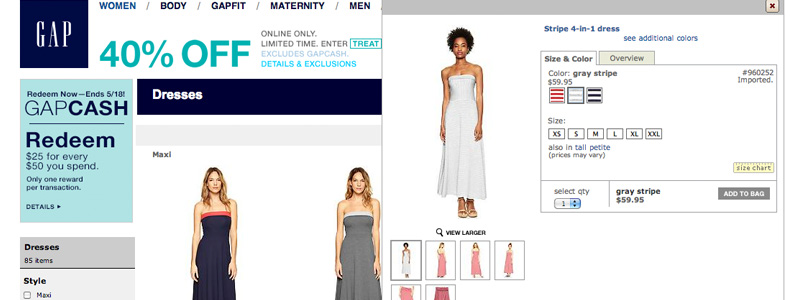BLOG
The Research Phase: How Online Shoppers are Making Buying Decisions
When you want to buy a new television or you search for a specific item to purchase, where do you usually find it? Some are more inclined to go directly to the store and check out all the different brands of the products they want to buy. Others, online shoppers, would choose to search for the product on Google and look for reviews before they head out to the shop, or check out retail websites and ads on TV.
In a study conducted by Parago, a retail engagement firm, the results showed a lot of insights into how consumers behave when they’re intent on buying something. The study used participants who lived in the United States, and up to 40% of them were employed full time. There were eleven categories for the products they wished to purchase, which included clothes, electronics, sporting goods, groceries and toys among others. The products in each category included jeans, cosmetics, video games, cable packages and more. The study also asked for the preferred type of media the participants turned to when they want to buy something, from going to the actual shop to perusing online shops to watching television for relevant ads.

From this study, we can conclude that there are four vital considerations when you, as a brand, would like to entice customers to buy your products.
1. Consumers don’t usually turn to social media to do research on products. Parago’s study found that consumers would only look to social media sites 15% of the time to find the product they’re looking for. Though this looks bleak for social media, it does not mean that social media has very minimal influence when it comes to consumer behavior. Many businesses use social media in other ways such as to raise brand awareness, showcase their products and entice customers to consider buying their products when the need arises.
Social media can have some influence on purchases thanks to marketing and advertising strategies, but it’s still not the most common resource that customers would turn to when they already know what they want to buy.
2. Google is more often used than Amazon when it comes to product research. Many businesses and researchers would assume that Amazon would get the top spot when it comes to consumers searching for products to buy. Amazon has established itself as an easy-to-use and reliable source of information for all sorts of products. It has categories and subcategories for all the possible products, as well as buying options for those who wish to purchase second hand items. On top of that, Amazon allows its user to post reviews of the products they’ve purchased, giving their insights to other potential buyers about the product and even the person or business they purchased it from.
Overall, Google is still the top contender for product research. With the right keywords, consumers can find exactly what they’re looking for in record time and make an informed purchase, rather than browsing a store or even Amazon. Considering Google’s strict ranking procedures, you can be quite confident that the top results would be reliable and trustworthy.

3. Retail websites rank third as the most commonly used resource. Research shows that consumers still make decisions based on their brand loyalty to the point that they would rather go directly to the brand’s retail site instead of searching on Google or Amazon. This is particularly true for those who are looking to purchase clothing items, possibly because the purchase of clothing requires more consumer trust than other items that can be purchased online.
The same holds true for subscription services. It’s possible that consumers look to buy subscriptions from the actual retail website because this is the only place where the subscriptions would be available. It’s also possible that consumers are more likely to trust the official site of the service provider of their choice over Google or Amazon.
4. In-store shopping still doesn’t beat out online shopping for a lot of products. It used to be thought that online shopping would be restrained because people would want to be able to have a look at the product in real life before purchasing. Though this was thought to be the limiting factor for e-commerce, it’s been shown that for many product categories the need to handle the products doesn’t stop people from purchasing online. Even things like electronics, furniture, household equipment and sporting goods only cite in-store displays as their third or fourth most turned to channel for purchases.
However, consumers who are looking to buy groceries and pet supplies are still more likely to turn to in-store displays. It’s possible that they would rather go to the physical shop because groceries and pet supplies are immediate needs that must be within their possession as soon as possible. It’s also possible that they would rather look to in-store displays since shipping and handling for pet needs and groceries are different from electronics, clothing and household equipment.

Important Points for Online Retailers
In line with all the information from the research above, there are some things that online sellers should keep in mind in order to ensure that they can still attract consumers:
1. Get to the top of search results. If you’re not in the top results for keyword searches involving your products, consumers are less likely to see your selection of products. As Google is the top resource that consumers use when searching for products, you have to ensure that your site is optimized in order to grab their attention. Using SEO, social media and user reviews, you can increase your link profile and visibility in online searches.
2. Give consumers an online experience that can replace the need to do in-store shopping. An in-shop store can give the customers the full sensory experience of having their desired product within their reach. In order to step in, online sellers should be able to give the customers something to replace the real-life feeling of having the products within their grasp. You can do this by giving them more information about the product, showing them videos and showing them images that give them a relative idea of the product.
The availability of the Internet providing information and enabling online shopping has definitely changed consumer behaviour. Being wary of how consumers use the Internet to surf and shop, you will be able to figure out how you can best promote your business, your goods or services. Be sure to keep these tips in mind for when you’re devising a new marketing strategy!











